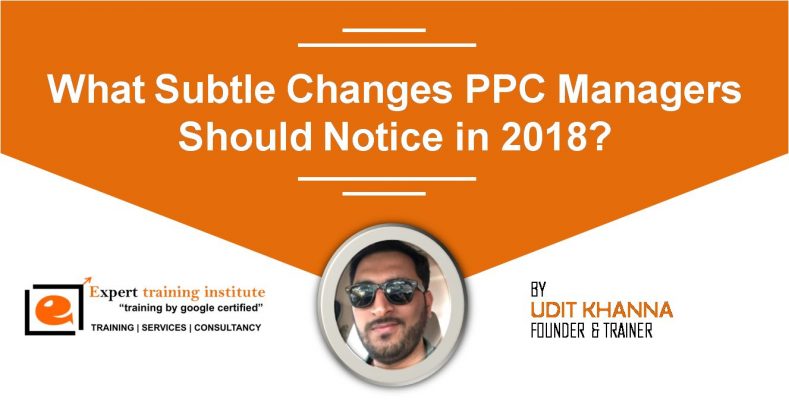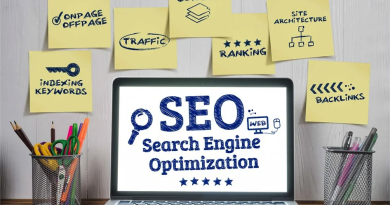Why User Experience Matters In Google Visibility
Gone are the days when SEO was only inclined towards keywords and link building activities to gain links to any website. With everything advancing at a fast pace, this, too, has changed. In the present era, the priority is delivering high-quality content to receive the best possible response to a user’s request.
Are you already wondering about it?
Well, to answer that, it is because of Google, which is continually improving its algorithms to boost a user’s experience.
Do you have a question here?
Do not worry. I have answered the same below. So, read on.
There must be times when you feel stuck to optimize your website for search engines, but not getting to know those that actually matter.
Well, one of those is user experience. Wondering about what it is? I already said, do not worry. I have got your back.
So, user experience comprises many factors, including the speed of page load, navigation ease, related resources, and many more. The main objective of user experience is to create an environment that compels the visitors to take the desired action by effectively meeting their requirements, understanding and addressing their concerns, and finally converting them.
An exemplary user experience calls for meeting the needs of a customer without creating any fuss.
User Experience is a Ranking Factor
With the information shared above, you might have got an idea about how a good user experience results in satisfied users, which ultimately results in better ranking.
Talking about the same, there is no direct link between ranking and user experience; thus, Google’s machine learning considers approaches that incline towards positive user experience. As a result, it becomes essential to make your page the same as a page with the ultimate user experience.
Now, you, of course, must be wondering about how it goes and what machine learning is. So, let’s take a look at the same.
RankBrain
To create a meaningful match between content and requests, Google uses a mechanism based on Artificial Intelligence called RankBrain.
Rankbrain is the 3rd most important ranking signal of Google. This algorithm takes into consideration and analyzes a request from a user’s perspective, tries to understand the intention of a user, and then takes a look at how the content available on the website answers the question of the users.
It usually does this by taking into consideration factors such as bounce rate, click-through rate, dwell time, and pogo-sticking. Now, what is the bounce rate, dwell time, Click-through rate, or Pogo-sticking? Well, the answer is right next.
Bounce Rate: The bounce rate is the percentage of users leaving the website without going to any further subpages.
Dwell Time: Dwell time indicates the time a user has spent on the website.
Click-through Rate: The click-through rate is the number of users who have clicked on the given link and entered the website.
Pogo-Sticking: When the user immediately bounces back by clicking the back button, after clicking on a link on the SERPs and seeing that it is not what he/she is looking for.
Besides this, it also takes into consideration various factors, including backlinks, content freshness, page authority, domain authority, content length, etc.
The figure below illustrates what does Google Rankbrain do for user satisfaction:
How Does SEO and User Experience Go Hand In Hand?
The days of SEO strategies being oriented towards satisfying search engine robots are long gone. Now, the robots analyze a website based on the user’s experience, and that is the reason that SEO experts face a lot of challenges.
First things first, SEO experts are inclined to satisfy the users by delivering the right content. Directly speaking, they have to take care of the user’s experience. They must be dedicated to making this experience as pleasant as possible.
Thus, they have a goal to come up with a website that is clear and attractive to a user.
Now, the question is, how to do it?
Here are a few tips for doing the same:
#1. Navigation
Navigation is essential since it allows the user to navigate to the subpages smoothly. Now, it is not only vital to create a good user experience but also for the dwell time and bounce rate. Also, better navigation makes it possible for Google robots to index the site.
So what is essential to consider while designing a navigation page?
First off, the route between the main page and subpage should not be too long. Expanding the menu and shortening the path to subpages makes it easy for Google robots to reach them.
#2. Loading Speed of the Page
One of the crucial factors in Google’s ranking is page load time. Websites with long loading time not only irritates the users but also are unlikely to hold a high position in Google’s ranking.
People usually close a long-loading website, which eventually results in a high bounce rate.
So, you have to optimize your website and its pages in a way that the time taken to load a page is minimized.
Also, you may go through the recent update of Google page speed here.
#3. Text Formatting
When it comes to search engine robots and users, none of them likes to see large text blocks. So, the right formatting of the text is essential since it helps in scanning the content on a website faster and efficiently.
Divide the texts into small fragments with a hierarchical structure. Organize the headers (H1, H2, H3) to facilitate highlighting and reading text.
#4. Mobile-First Index
Mobile-first is basically a design philosophy that focuses on creating a mobile version of a website or applications at the initial stage and then adopting the same to a larger screen. This approach is not only beneficial for SEO and page indexing but also benefits the growing number of mobile users to allow them to browse the site or app easily.
Website owners started looking for a better mobile experience when Google came up with its mobile-friendly update and made it one of the factors behind the mobile search engine’s rankings.
Well, it is good to optimize your pages for smoothening the experience for mobile users. However, if the pages in the mobile browser are not landing quickly, then the users may get discouraged from enjoying the available content.
So, what can be the possible solution here?
Well, the solution is AMP (Accelerated Mobile Pages). The Plugin is the result of a collaboration between Twitter and Google. It may be defined as an open-source initiative project, specifically designed to optimize faster mobile pages.
It is like taking an already mobile-friendly page and then making it load quicker.
Since the position of a website depends highly on the content of mobile versions, ensure that your website is well suited to mobile devices. Also, care must be taken that the mobile version is equally informative, like the desktop version.
Failure to meet these conditions might result in lowering the ranking; therefore, reducing the search results.
So, these were a few tips to help you stand better on Google’s visibility. Taking care of these tips will help you stay ahead, both in terms of ranking and search results.
In a Crux
Google is smart and takes into consideration all the related factors that are linked to make a website rank better and stay ahead of others. So, make sure you work hard and smart in a competitive internet era.
Now, why does user experience matter in Google visibility? Well, you must have already learned about how a website ranks better and fast, provided it delivers the content right, and consider factors such as navigation, page-loading time, text formatting, and mobile-index, to make the experience smooth for a user.
All in all, the more you are inclined towards delivering the best to your user, the better your website will perform.
Also, if you have any other insights that might help our readers with ranking better by smoothening a user’s experience, feel free to share the same in the comment box below.




